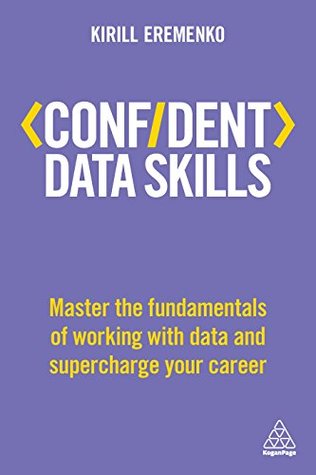More on this book
Kindle Notes & Highlights
Read between
April 28 - September 10, 2018
being a data scientist ultimately means being the storyteller of information.
few people think of data science as the propeller behind many of these inventions.
Nevertheless, it is impossible to ignore the fact that data itself is not concerned with questions of morality, and this has left it open to exploitation and abuse.
it. Thus, Chapter 3 also addresses the various security
When you interacted with each of these touchpoints, you left a little bit of data about yourself behind. We call this ‘data exhaust’.
When you bookmark or highlight the pages of a novel on your Kindle, you are helping distributors to understand what readers particularly enjoyed about it, what they could put in future marketing material and how far their readers tend to get into the novel before they stop.
And today, when you emerge from these touchpoints, the data you leave behind is swept up and added to a blueprint about you that details your interests, actions and desires.
Let’s say that in this definition of data being a unit of information, data is the tangible past.
The answer is yes. Data doesn’t discriminate. It doesn’t matter whether the unit of information collected is quantitative or qualitative.
Put very simply, big data is the name given to datasets with columns and rows so considerable in number that they cannot be captured and processed by conventional hardware and software within a reasonable length of time.
In short, if you just can’t work with it, you can call it big data. When data scientists use the term, they don’t use it loosely. It is used to draw attention to the fact that standard methods of analysing the dataset in question are not sufficient.
This was all thanks to George Gallup, the first person to make Hollywood executives aware of the power in using data to inform decisions and make predictions, from casting lead actors to choosing which film genre would be the safest financial bet.3
So, what if, after all the clever data-driven evidence, you ended up hating the film you last saw at the cinema? Well, data might not be able to predict everything, but it certainly got you in the seat. Data might sometimes get a C for achievement, but it always gets an A for effort.
As a nota bene: the even better news is that data will not deny you your interests. If you’re only playing at being the connoisseur but still enjoy a trashy zombie movie once the curtains are drawn, your data will continue to keep that secret enthusiasm of yours fed.
This data included users’ viewing habits, and those insights allowed Netflix to group its video content into diverse and surprising categories in accordance with the data. These categories were hidden from public view within its interface but were nevertheless exploited by the company to direct the right kind of film to the right kind of audience.
To that, I would answer that the data only follows what people want. This is desirable for any industry: to show the right audience at the right time and in the right place the relevant content to entice them to buy into their service.
The machines are not telling us what we want; they are making connections for us that we could not possibly have known.
Thanks to data, this is an age where our voices can actually get heard and have real power – so why not make good use of it?
It is this ability to crowdsource data that makes the application of data science in the discipline of medicine so powerful – for as long as the data remains, the gathered knowledge will not be dependent on individuals.
Data scientists do not need to know the ins and outs of every piece of software and every algorithm to make a difference in the field.
Think of the number of combinations we can get from a deck of 52 playing cards. Just shuffle a deck – it’s extremely unlikely that anyone else, in the course of human history, will have had the same order of cards.


